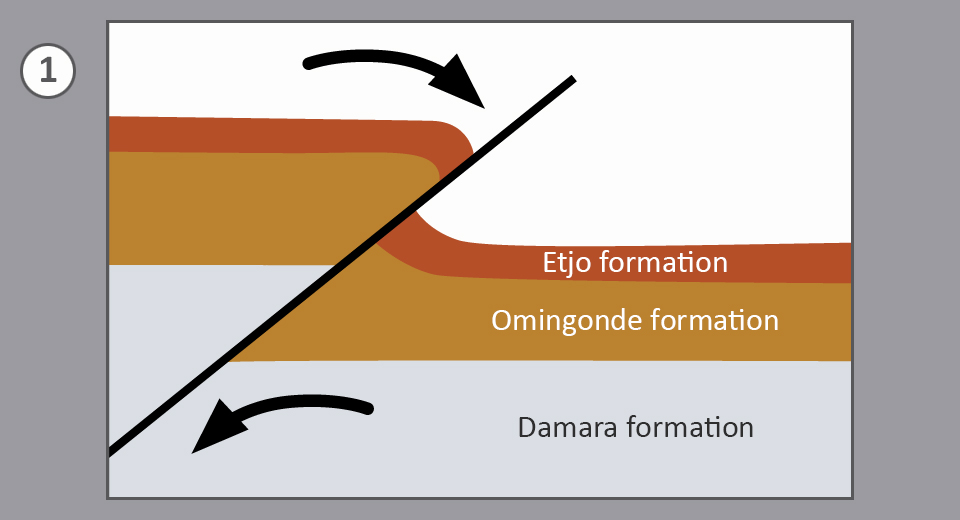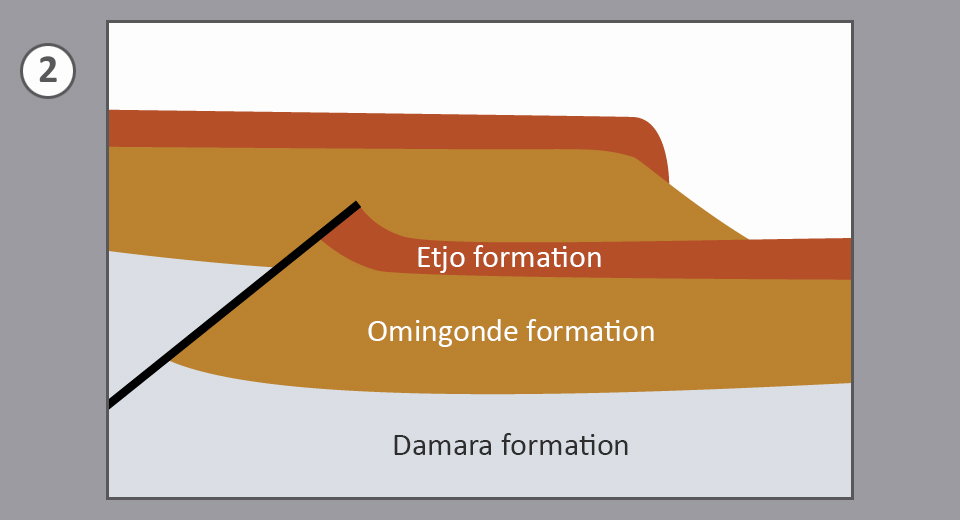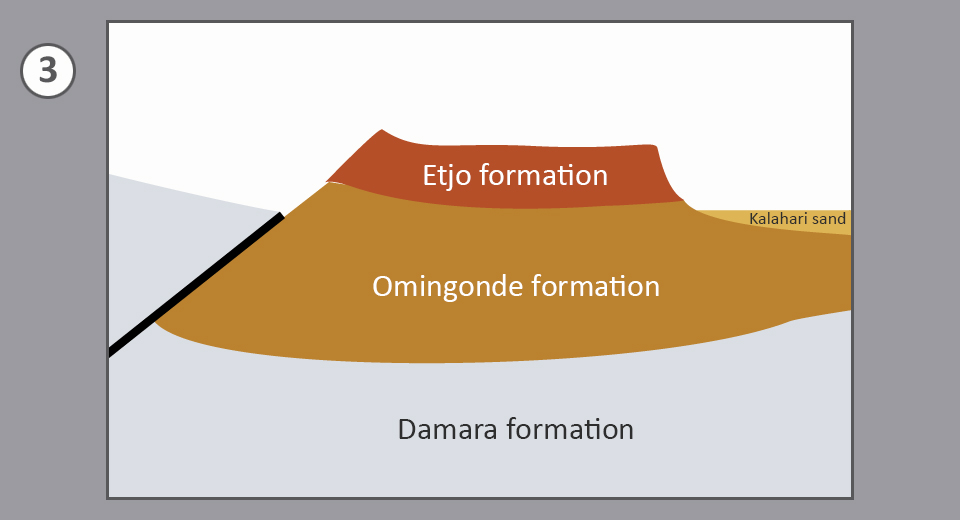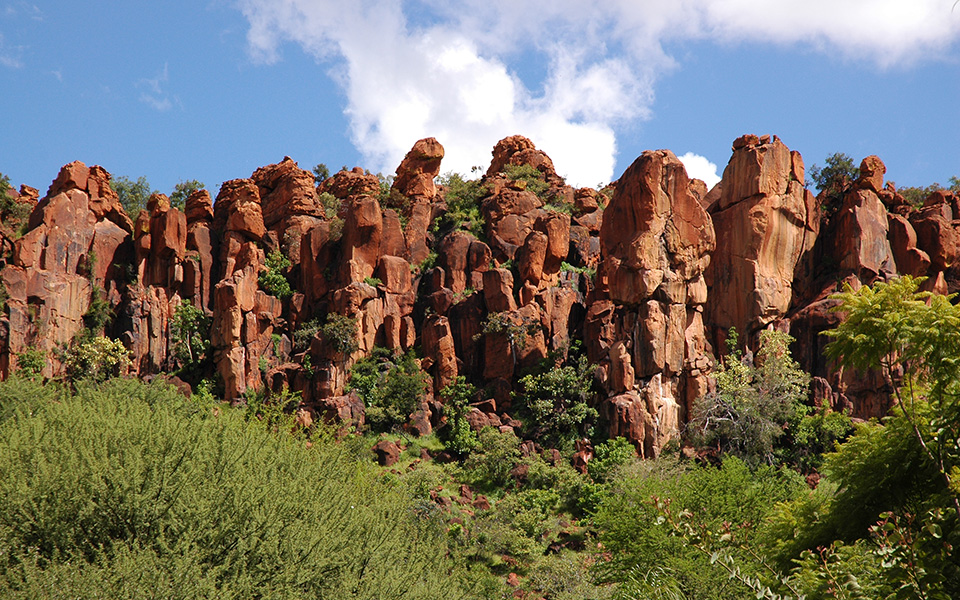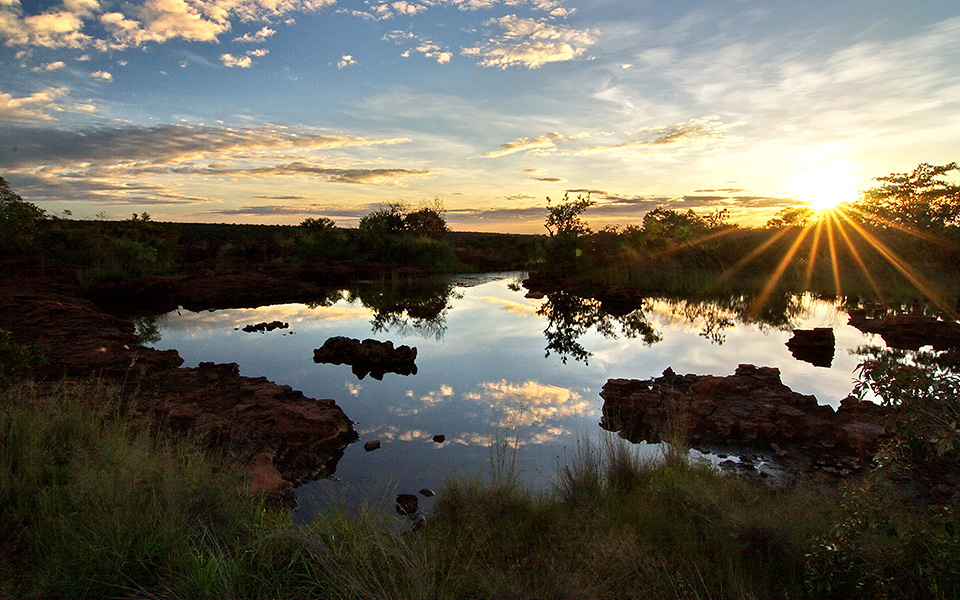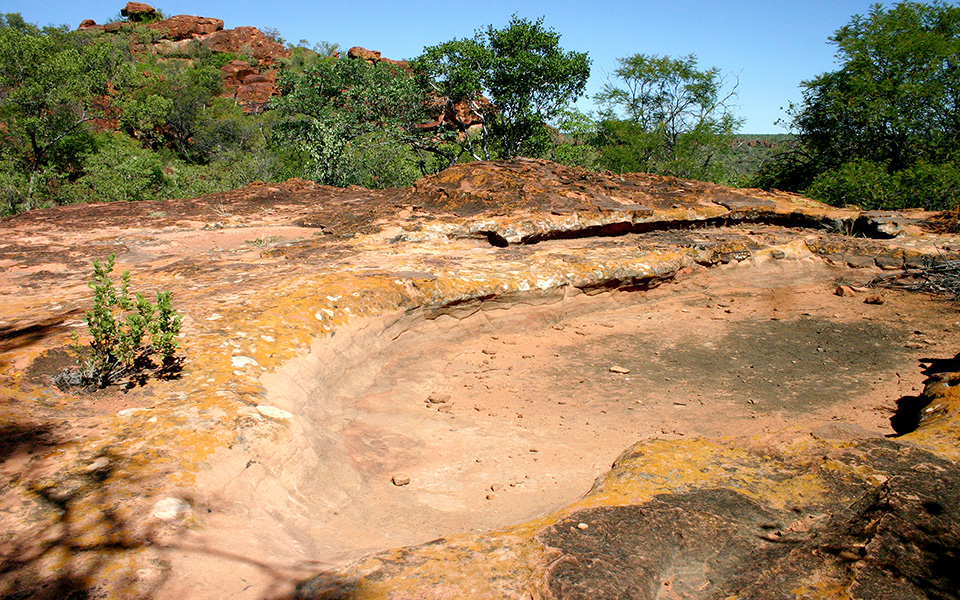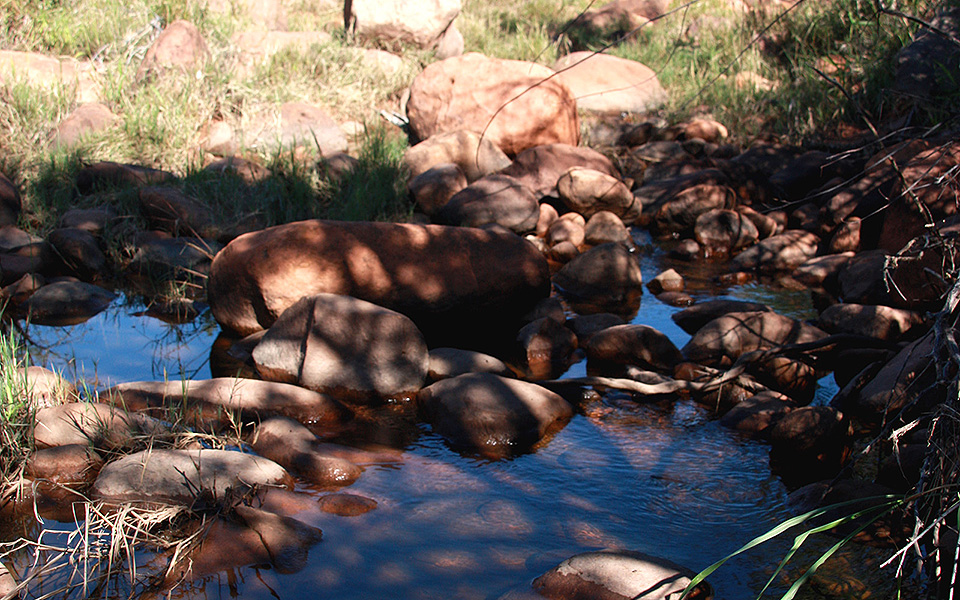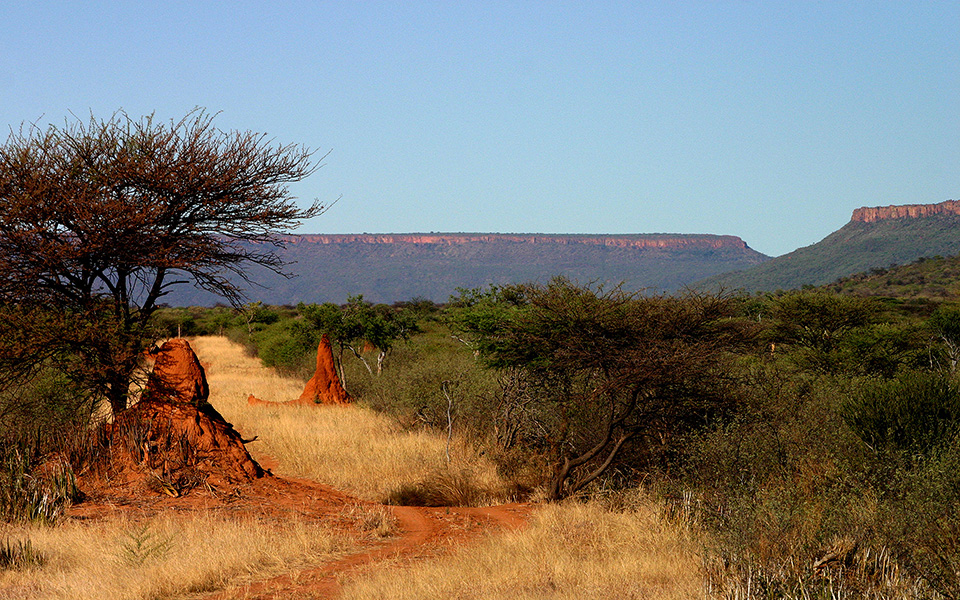Stacks of plates
The Waterberg was born about 130 million years ago, when the original continent of Gondwana broke apart. South America and Africa were separated in the region of what is today Namibia. Although the Waterberg is far from the rupture zone, the tremendous forces at work inside the earth could be felt at the Waterberg. A rupture of the earth’s surface had occurred here before Gondwana broke apart. Geologists call it the Waterberg disturbance.
The crust of the earth northwest of the disturbance was lifted hundreds of metres and shifted over the crust in the southeast. The top plate eroded over millions of years, just like the surrounding formations in the southeast. The lower plate, protected from erosion by the upper plate, is now visible as a plateau: the Waterberg.
